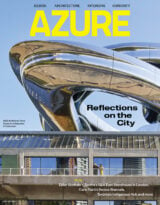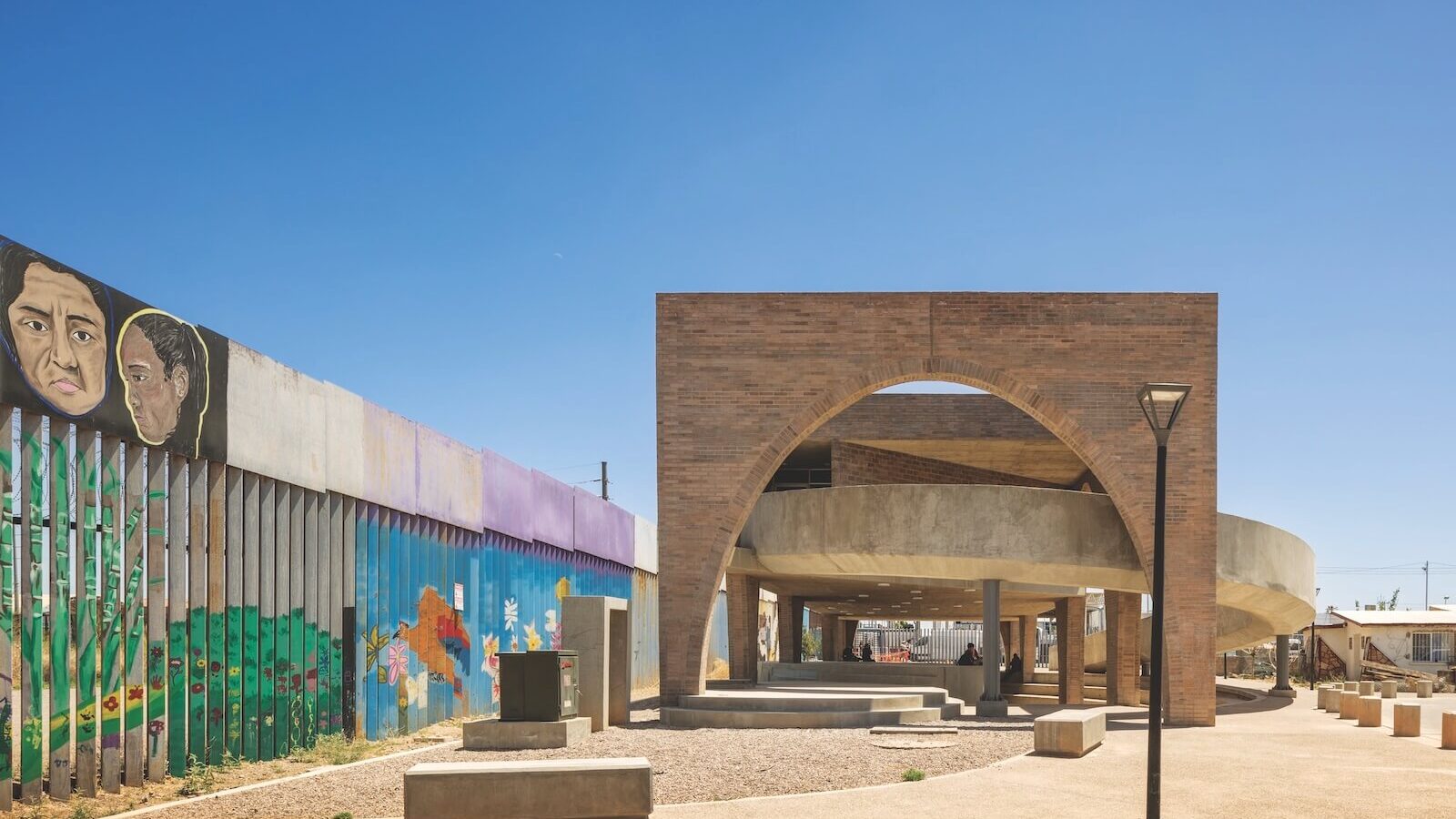
Last year, a park in the peripheral district of Las Granjas was renovated by Mexico City–based firm RZERO. The renewed space, known as El Aguaje, now features a central kiosk for neighbourhood assemblies, shaded walkways lined with trees, multi-purpose sports courts, and a communal laundry and play area near a seasonal stream. During rainy months, children splash in the recycled-water pool while their mothers chat nearby. Year-round, the park is teeming with life: Teenagers play ball at dusk, elders rest on benches beneath the trees, and families stroll along the walkways.
It’s an elegant and understated intervention — one of five that RZERO completed in Tuxtla Gutiérrez, including a market, a sports centre, a plaza, and a second park. Between 2020 and 2024, projects such as these started cropping up
by the hundreds across Mexico, all located within historically underserved and marginalized communities, remaking formerly unsafe and neglected areas into vibrant public spaces and community hubs.
The transformation began during former president Andrés Manuel López Obrador’s six-year term, which was launched by an inauguration speech in 2018 that introduced his celebrated phrase “For the good of all, first the poor.” It’s arguable whether López Obrador fully delivered on that promise. (In 2024, he was succeeded by his protégé, Claudia Sheinbaum, Mexico’s first female president in its 200 years of independence.) Certain programs, however, made a compelling case for what it could look like in practice. Among them was the Urban Improvement Program (Programa de Mejoramiento Urbano, or PMU), led by architect and urban planner Román Meyer Falcón through the Ministry of Agrarian, Territorial and Urban Development (SEDATU). Over just a few years, it delivered more than 1,300 public works in nearly 200 municipalities — most of them places where government investment had historically been absent.
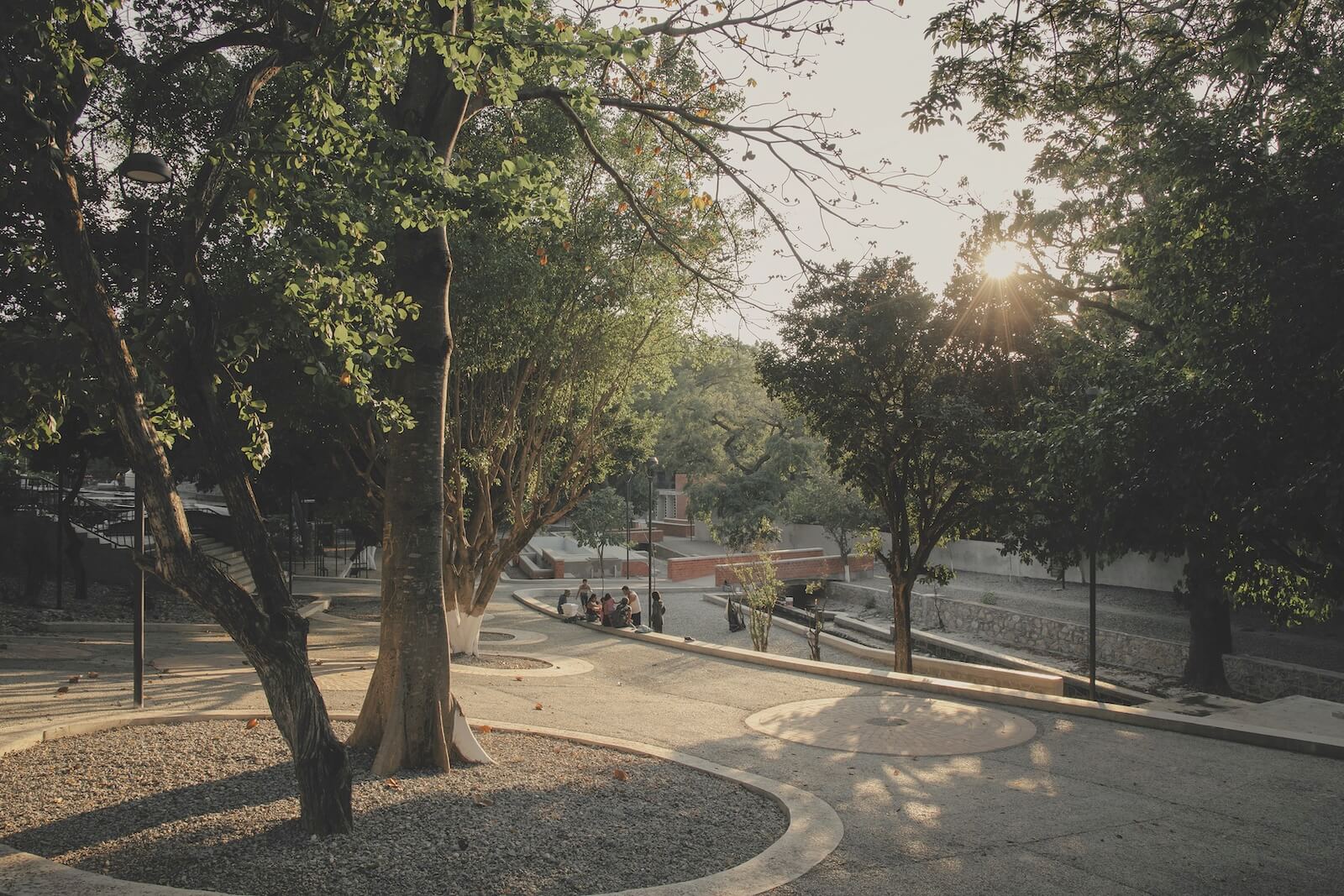
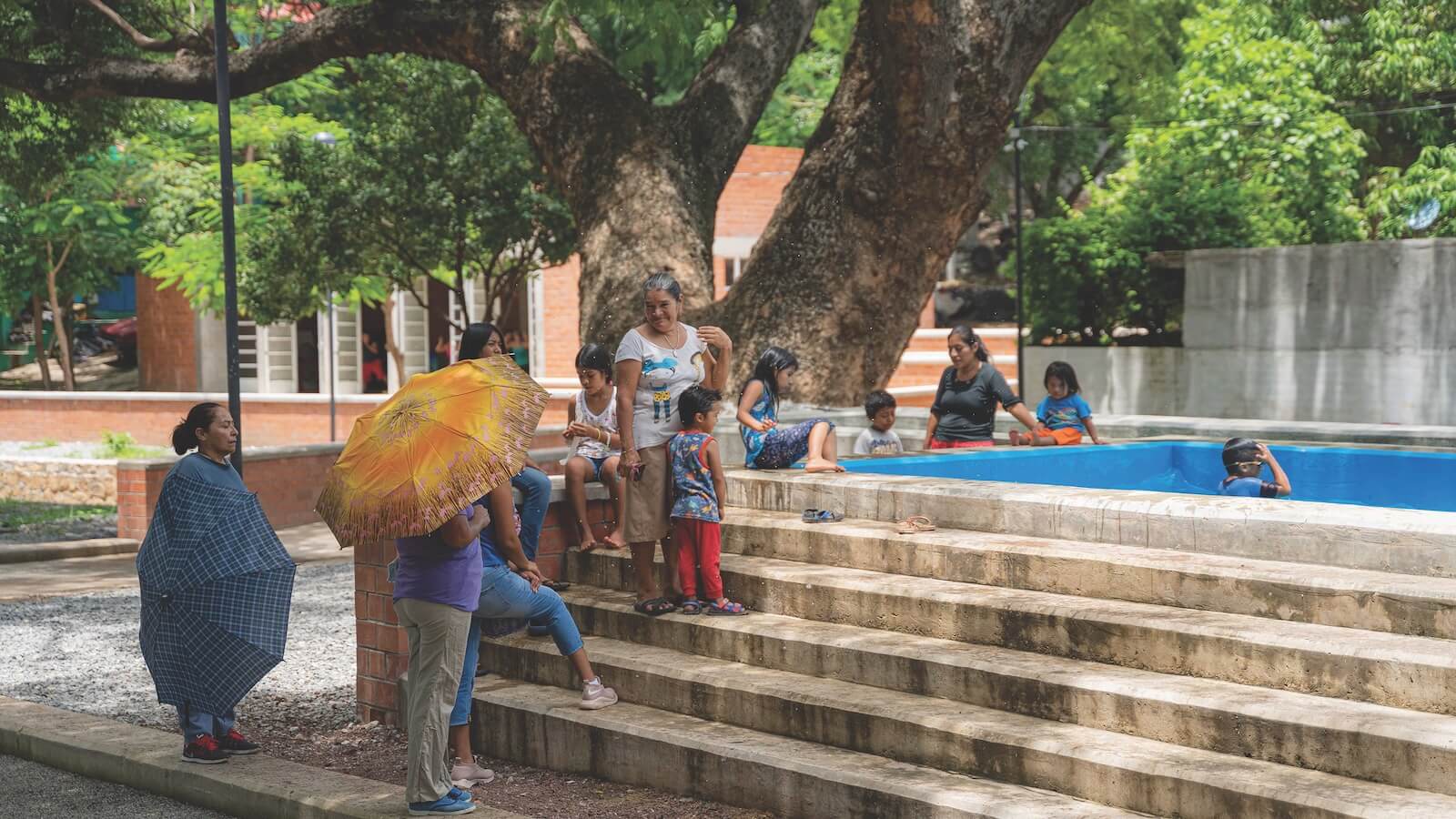
“How can we address the major socio-economic inequalities in the country’s most marginalized neighbourhoods?” Meyer Falcón asks, recalling the gist of the SEDATU program in early conversations with the president. The federal initiative aimed not only at filling gaps in infrastructure but at rethinking what the government owes its citizens. “Beyond basic services like power and sewage, we considered the broader civic infrastructure that makes a city whole: schools, universities, cultural centres, hospitals, sports facilities, main roads…all the things a city should have to support a good quality of life.” And while it is fairly obvious to point out that these essential elements are consistently missing from urban peripheries — and that this fact both contributes to social inequality and stifles upward mobility — addressing the matter is quite complex, especially in Mexico, where bureaucratic processes and rampant corruption often complicate efforts to deliver meaningful change.
Long before any architecture firms were tapped to design these projects, the team at SEDATU focused on analyzing and updating the land-use, ecological and urban planning programs of each municipality so that they could be reviewed by local councils and recorded into the public property registries. Then came the fieldwork — interviews, surveys, and workshops — within the selected communities and their local governments to determine what form the intervention would take. “Though it wasn’t always possible due to various constraints, we tried to create critical physical connections between new infrastructure and how people would access it,” Meyer Falcón says. “If we built a school, we also aimed to improve the avenue leading to it, upgrade the lighting and sidewalks, ensure it connected to public transport, and maybe link it to a nearby park or sports centre.”
When it came time to bring in the designers, SEDATU invited more than 50 Mexican architecture studios to collaborate with the PMU. Some were later asked to take on more projects; others were quietly let go after they delivered the plans for their first. “Our relationships to architects were largely defined by the quality of their work on the field,” Meyer Falcón tells me. “We collaborated repeatedly with those who, though we were not paying them for supervision, would visit the sites, sit with the construction companies, answer any questions, and show a true commitment to the follow-up work that was not included in their contracts.” Without providing names, he offers the counter-example of certain architects that simply consulted Google Earth, never stepping foot on site. “It was a good way of determining who was actually interested in designing public architecture,” he concludes.
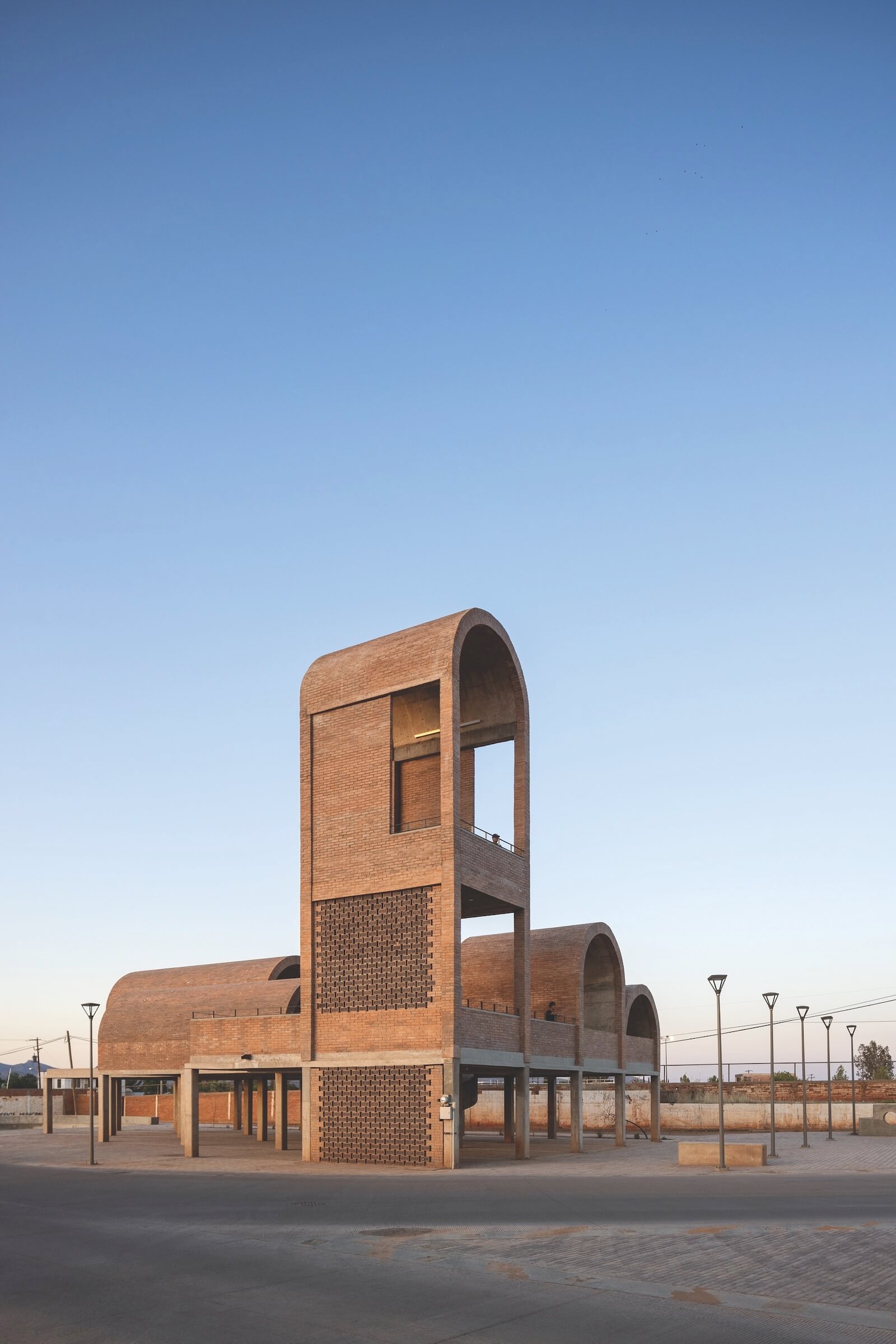
Mexico City–based architect Fernanda Canales was among those who adopted a hands-on approach. In addition to leading her eponymous firm, Canales is a prolific theorist who has written several books about the interdependence of the private and public spheres. When SEDATU approached her to design a series of buildings in two towns along Mexico’s border with the United States, the commission came with a predetermined brief: Build an auditorium and a market. But to Canales, the real work began with questioning the brief itself.
“The most important part of the projects we developed in [the towns of] Agua Prieta and Naco was reprogramming the government’s initial request to suit the local conditions and daily needs of the community,” she says. In these small towns, where public infrastructure was scarce or nonexistent, and long-term building maintenance was unlikely, Canales saw little point in following a conventional approach. “We had to rethink what an ‘auditorium’ or a ‘market’ actually meant in a place with no safe public spaces, no one to run the facilities, and no budget for upkeep.”
In Agua Prieta, Canales designed a linear park and a library, the latter a structure raised over a sunken ground floor where stairs become seating for an open-air amphitheatre (image top of article). There, even those who might never use the library (accessible by a concrete ramp that snakes around the elongated building) can enjoy the shade, public restrooms and open forum. “These are buildings that work for the community regardless of their specific program,” she says. “Adaptability and openness were the main design strategies.” Particularly in border towns, where transience is part of daily life and public space is often shaped by surveillance or control, spaces that invite users to make them their own can trigger subtle but meaningful changes in perspective. In that sense, “architecture is a powerful antidote to vulnerability and social injustice,” says Canales.
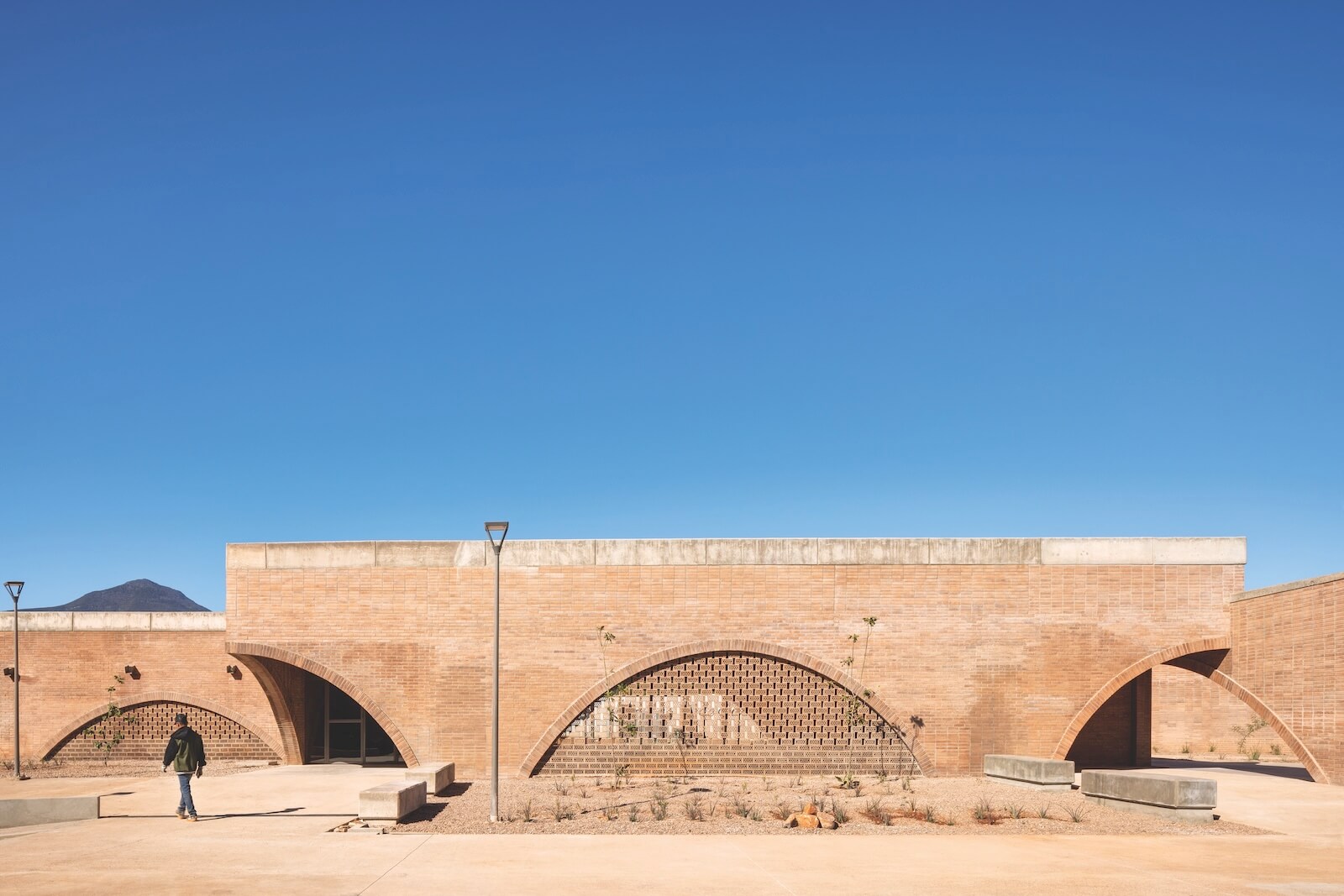
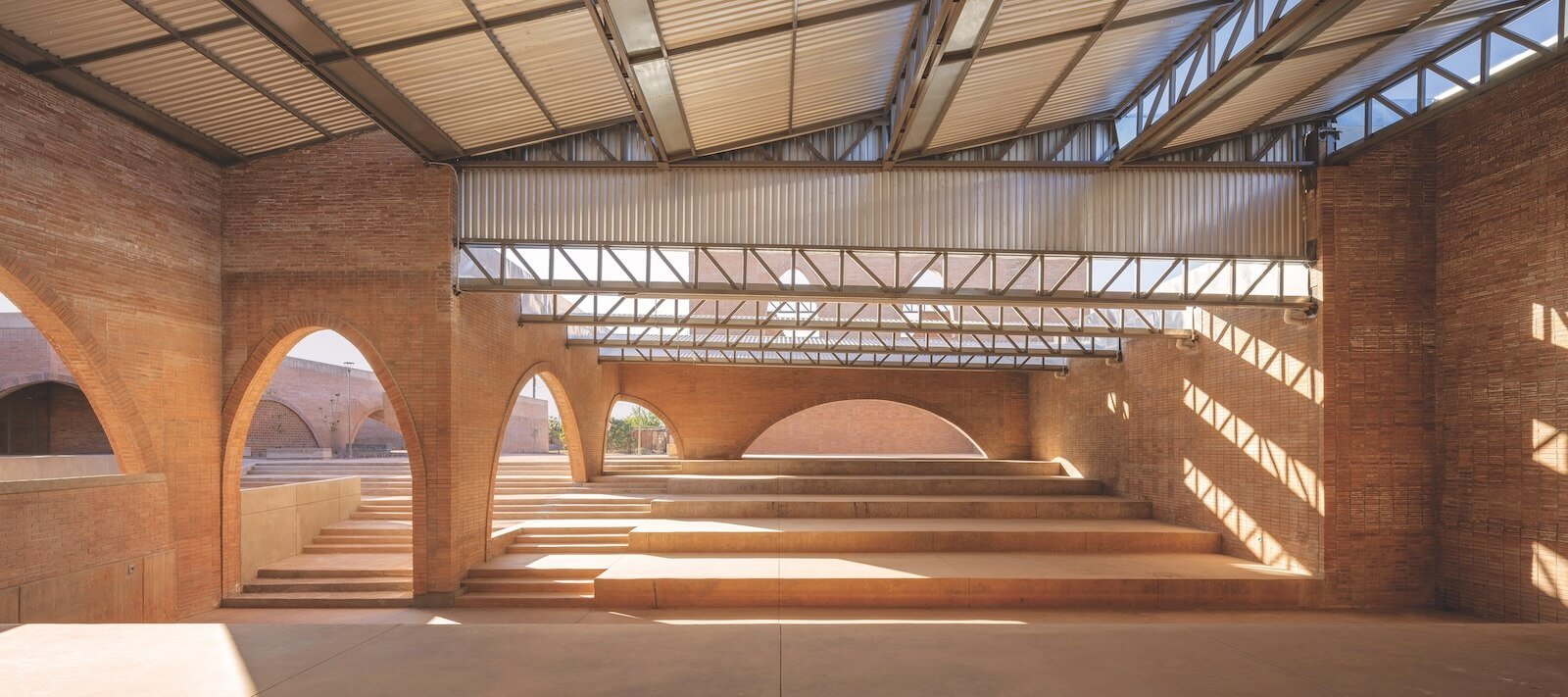
For Naco, Canales reconceived the market as the entrance to the city: a plaza designed to slow down traffic and create safe pedestrian crossings, with several large shaded structures. The building is almost sculptural in its simplicity, consisting of a series of concrete columns and red brick barrel vaults that host a variety of informal uses and provide citizens with a unique perch from which to take in their surroundings. “It became a kind of lookout point where, for the first time, people could see their city from above, as well as the neighbouring city on the other side of the border,” says Canales. The auditorium, meanwhile, was imagined not as a sealed space used a few times a year but as a community centre made up of seven blocks that host a cafeteria, a daycare, a workshop area, classrooms, multi-purpose spaces, restrooms, and an open-air auditorium that functions as an extension of the sidewalk. Echoing the nearby market plaza’s formal qualities, the complex employs the same materials: concrete stairs that double as seating and brick walls with wide, arched openings that, in lieu of glass, feature lattices of perforated bricks.
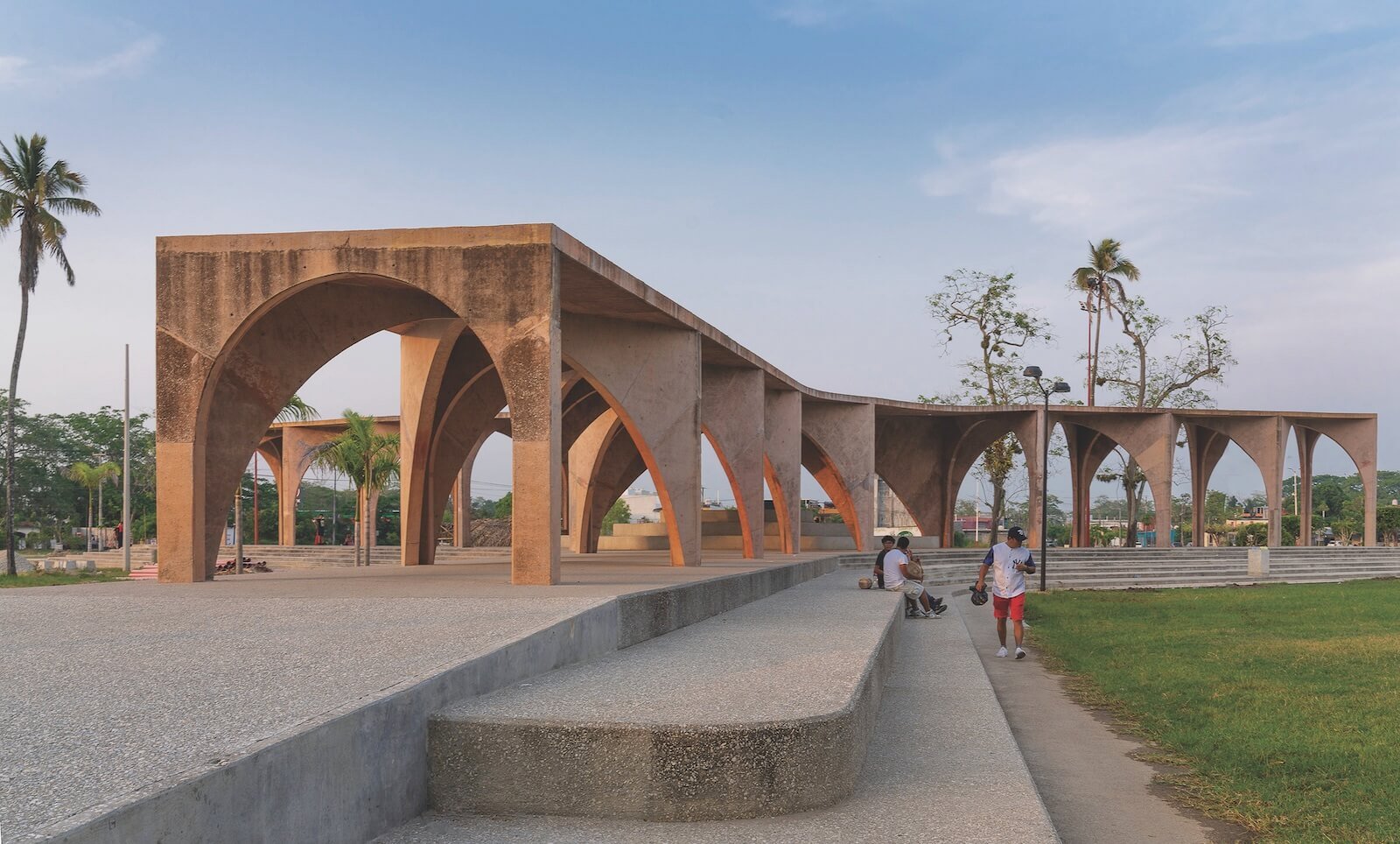
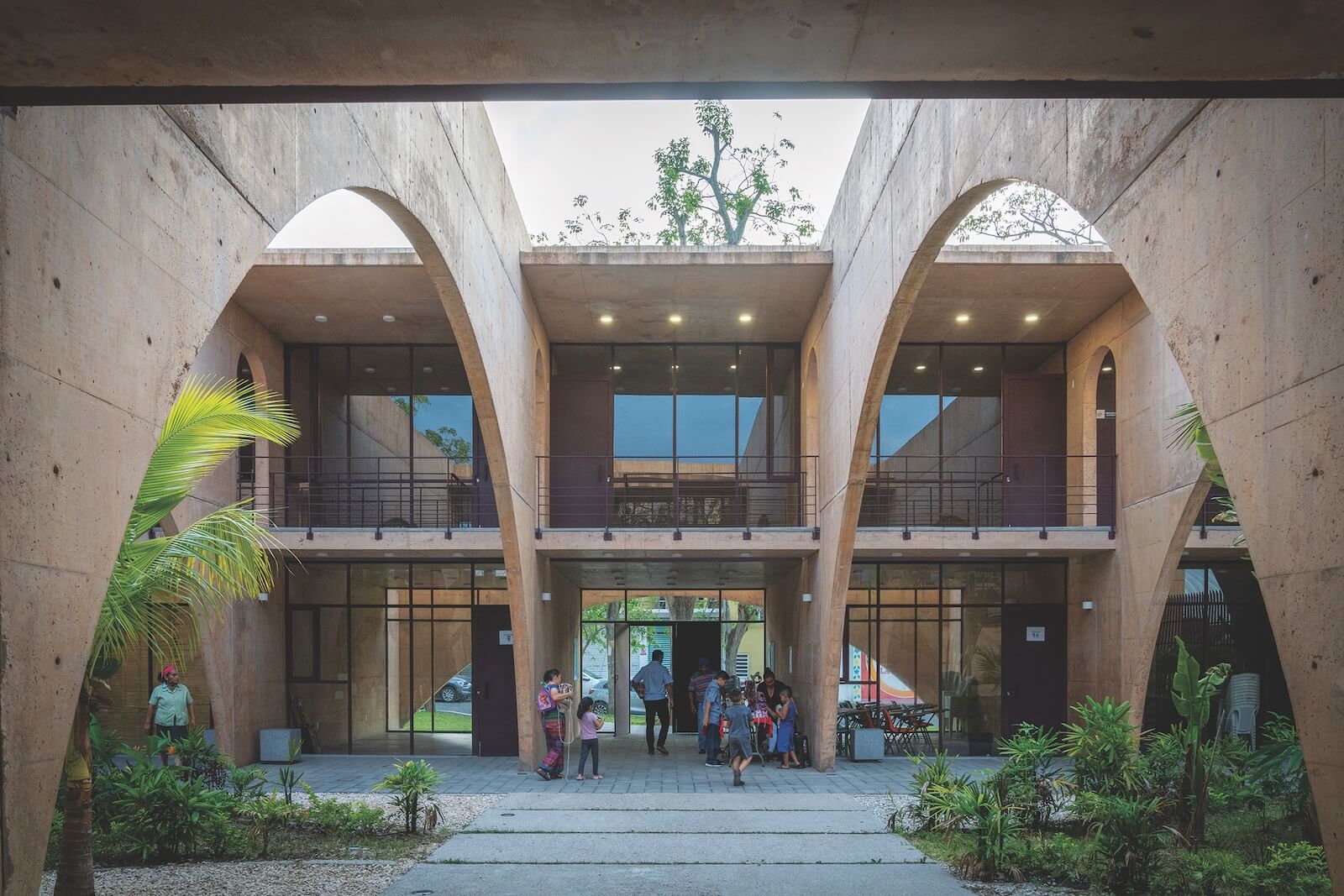
When asked to reflect on the most successful projects, Meyer Falcón doesn’t hesitate to offer a candid assessment. “I’ve always been honest: About 33 per cent of the projects were excellent, 33 per cent were average, and 33 per cent weren’t the best,” he says. But among the high points, certain lessons stand out, particularly around how architecture can double as local economic stimulus.
One of the program’s early directives was to avoid prefab or industrialized construction methods. “We told architects we needed labour-intensive methods: masonry, rebar, poured concrete,” Meyer Falcón explains. That attention to process, not just final product, meant that design decisions had to consider local trades, materials and capacities. The approach reduced costs and, more importantly, strengthened the link between public space and the people using it. “This allowed us — contractually — to ensure that 38 per cent of project budgets went to wages,” he says, “which creates an economic boom in these small towns. And it fosters a sense of ownership, because local people were hired to build the spaces.”
Another architect who engaged deeply with the PMU was Bernardo Quinzaños, whose firm, Centro de Colaboración Arquitectónica (CCA), designed a series of interventions in the states of Nayarit, Southern Baja California and, most notably, Tabasco. There, in the small town of Jalpa de Méndez, CCA created a group of civic spaces in one of the most underserved regions in the country. “Jalpa de Méndez is a municipality where virtually the entire territory is impoverished,” Quinzaños said. He described the town, with the exception of a small historic centre, as “the sort of place where the hand of an architect had never been seen.” CCA’s award-winning Community Development Center — which includes a library, auditorium, workshops, and flexible areas that can host various cultural events — invited the citizens of Jalpa de Méndez to gather in ways that were previously impossible.
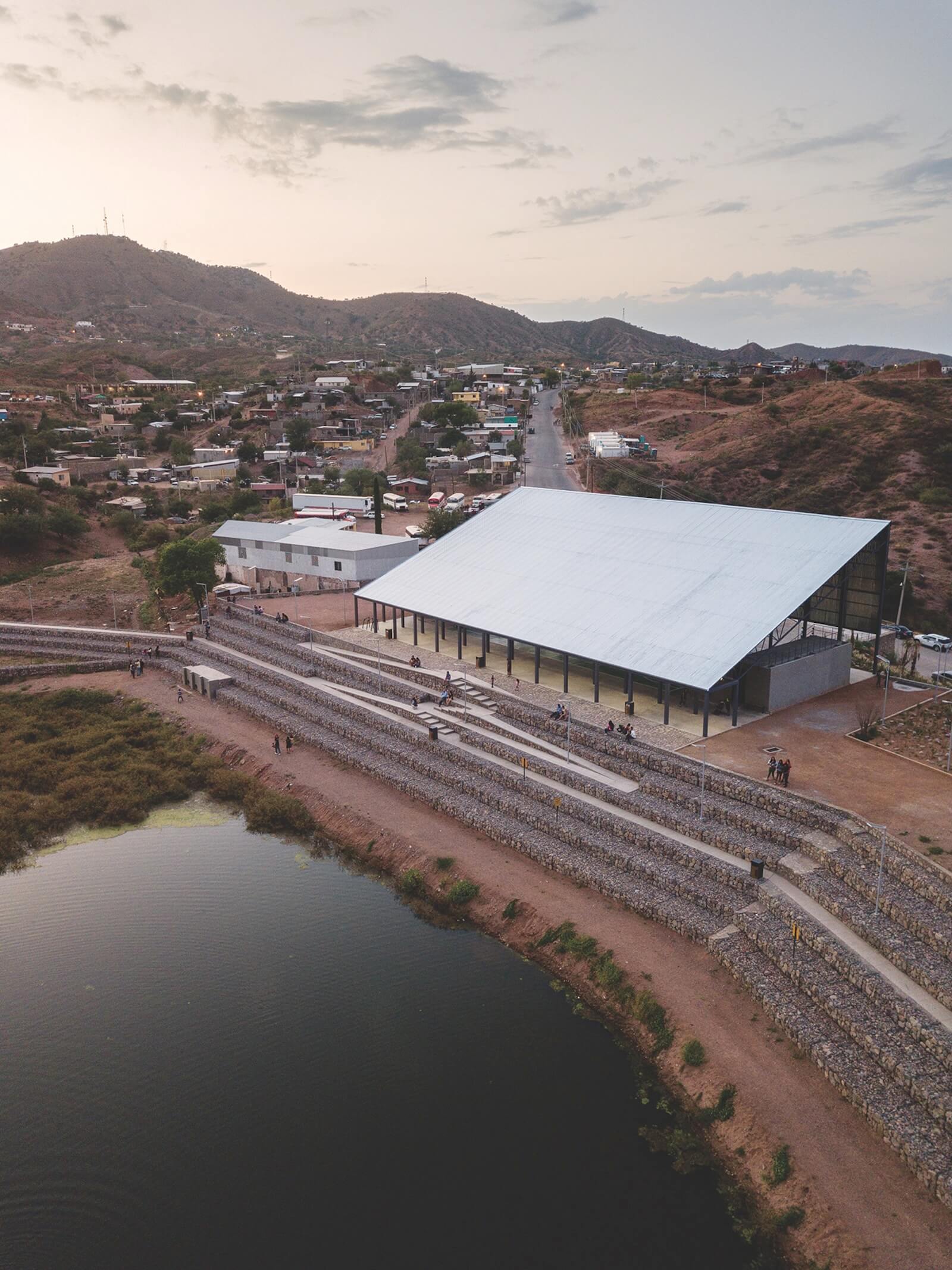
It was also a tangible expression of a deeper conviction about the role of architecture in society. Though president López Obrador faced intense scrutiny and criticism from political opponents for the entirety of his term, the PMU stood out as a rare example of public policy that transcended partisan lines. “At the firm, we feel strongly that it is our responsibility to create public works while remaining agnostic toward political parties,” Quinzaños reflected. “We have to work for the people, not for whoever is currently in office.”
Meyer Falcón stresses that the PMU was simply building on a national legacy of high-quality public projects. In the 20th century, renowned architects like Mario Pani, Pedro Ramírez Vázquez and Teodoro González de León designed housing complexes, university campuses, museums, auditoriums, libraries and government buildings that still stand today as symbols of progress and pride. The large majority of those, however, were in metropolitan areas. “The past administration gave us a chance to build public works in places that had never seen them before,” he says, “and that, I think, is one of the most important changes we achieved.”
Another Government-run Program Takes Up the Torch
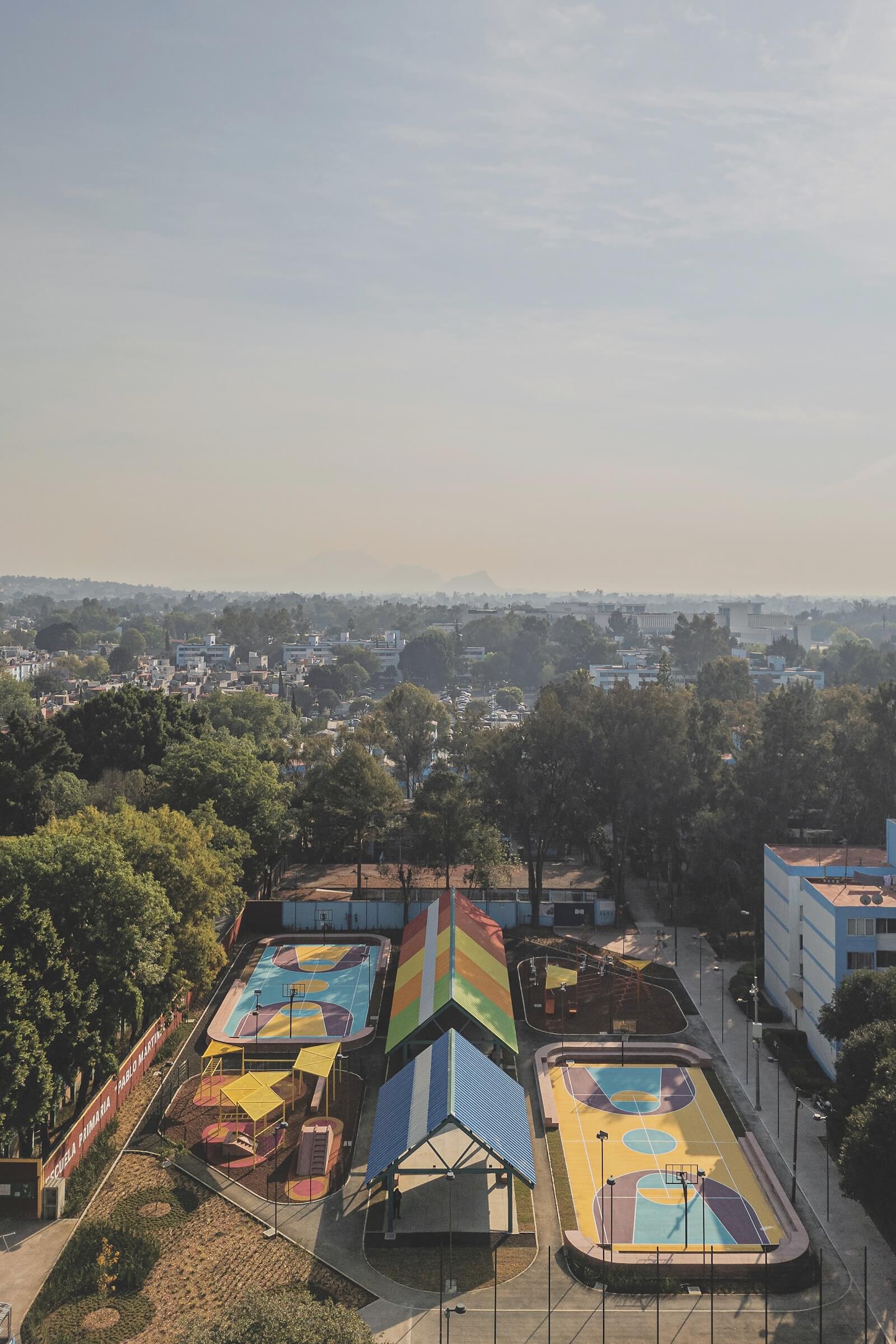
Since its founding in 1972, Infonavit (the Institute of the National Housing Fund for Workers) has connected Mexico’s formal workforce to credit for housing —
becoming, at one point, the largest mortgage lender in Latin America. But quantity often came at the expense of quality. For years, the homes it financed were built on the urban periphery, with minimal access to jobs, transit or public space. Some were so remote or poorly constructed that entire developments were later abandoned.
In the past decade, various initiatives have brought Mexican architects to collaborate with Infonavit, signalling an intention toward a more thoughtful approach. Del Territorio al Habitante (2017), for example, invited 84 firms to design housing projects across the country in response to the specific contexts of rural areas, rather than the cookie-cutter models of the past. (The plans were handed to future homeowners along with a credit to cover the costs of self-construction.) Last year, AMASA Estudio was commissioned to lead a series of transformative interventions within Infonavit’s large urban housing complexes in Mexico City.
The projects — including UH Infonavit Santa Fe, Iztacalco and CTM Culhuacán — focus on revitalizing neglected communal spaces through sensitive design strategies that respond to the specific challenges of each site. At Santa Fe, a once-forgotten ravine was transformed into an accessible, multi-level park with a multi-purpose hall and a rooftop basketball court, carefully preserving existing vegetation.
In Iztacalco, AMASA enclosed a deteriorated hemispherical structure, creating a vibrant covered forum that invites social interaction and exercise. Meanwhile, their work at CTM Culhuacán (above) turned a dilapidated plaza into a lively community hub with playgrounds, sports courts, and gathering spaces designed with input from residents.
Current Mexican president Claudia Sheinbaum, who took office in September of 2024, has yet to articulate a clear architectural vision for Infonavit, leaving it to be seen how her administration will shape the future of Mexico’s social housing landscape.
How Did Mexico Revive Its Public Spaces – And What Can We Learn from its Era of Urban Regeneration?
Ana Karina Zatarain speaks with architect and urban planner Román Meyer Falcón about the Programa de Mejoramiento Urbano, a once-in-a-lifetime government program that has returned 1,300 public spaces to the people
